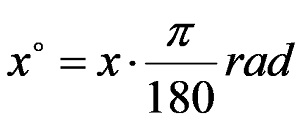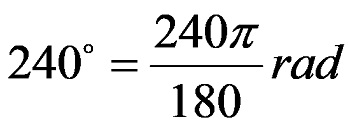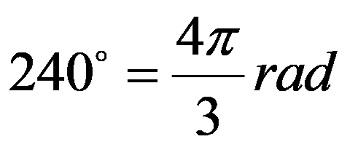This guide contains helpful information on how to convert from degrees to radians! Often, during the practical application of geometric knowledge and advancement of mathematical knowledge, we need to transform the measure of the size of angles from degrees to radians.
Convert Degrees To Radians
Sometimes, it is easier to use degrees, but sometimes we simply have to use radians, so that we can adapt to the proper advancement of our knowledge.
It is for all these reasons that every mathematician must know how to accurately convert degrees to radians. The text below will help you learn how to:
To effectively convert degrees to radians use the formula below:

Convert Degrees To Radians Formula
From the formula for converting degrees to radians, it can be seen that during the conversion process we need to perform the following steps:
- We multiply the numerical value of the angle in degrees by the fraction that has the constant number pi = 3.14 in the numerator, while the denominator contains the number 180.
- After multiplication, we simplify the resulting fraction to its simplest form (if simplification is possible.
- Finally, we mark the result as rad (rad is the notation for radian)!
The standard notation for an angle measured in radians is to contain the number pi.
Converting Example
See the example below:
Example 1: Convert the angle measure below from degrees to radians:

First we apply the formula!

Multiply the number 240 by the number pi!

Then simplify the resulting fraction in the previous check above to its simplest form. We divide the numbers 240 and 180 by 60! The number 60 is the greatest common divisor of the numbers 240 and 180. So the final result after converting from degrees to radians is:

As you probably already understood, the transformation that we have already described in the text above is very simple. Every student can apply it very easily. On the other hand, it’s a must-know because it’s safe to say that you’ll need to use it many times over the years ahead!
Anyone of you who has any additional question related to this type of transformation is free to ask us a question that will surely receive an appropriate answer! You can use the comment form below, or the main contact page on this website!




